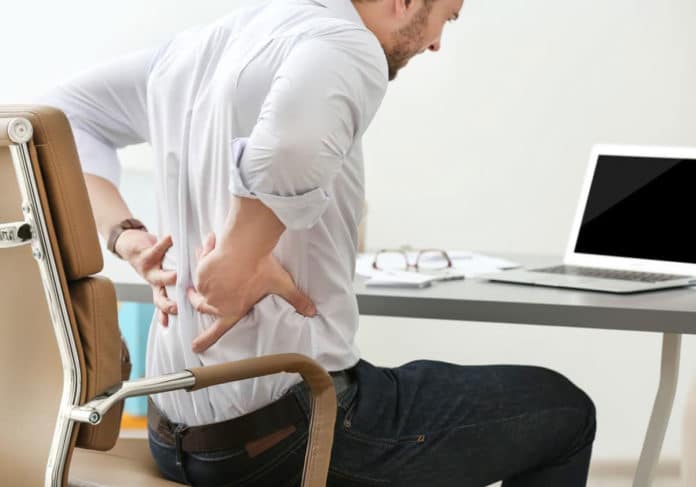Back pain is perhaps the single most significant contributor to disability worldwide, with over 50% of people living in developed countries experiencing it at some point in their lives. As well as affecting the well-being of many people, back pain is economically burdensome.
Given its substantial individual and societal costs, investigating the causes of back pain is an important endeavor.
A study from a team of bioarchaeologists at Simon Fraser University, the University of Liverpool, and the University of Sydney has suggested that the cause back pain might be evolution and spine shape.
Using advanced 3D shape analysis techniques, scientists compared the final lumbar vertebrae of humans with and without spondylolysis to the same bones in our closest living relatives, the great apes. They found that differences between human vertebrae with spondylolysis and great ape vertebrae were greater than those between healthy human vertebrae and great ape vertebrae.
People who created spondylolysis have more wedge-shaped vertebrae, where the front is taller than the back, notwithstanding other subtle shape differences. The differences are predictable with the vertebrae having “overshot” the optimum for walking on two legs, leaving the individual prone to developing spondylolysis.
This is the third study that shows the association between vertebral shape and back pain to the evolutionary history of our lineage. In prior studies, scientists had demonstrated that humans with intervertebral disc hernias have vertebrae that are more similar in shape to those of modern chimpanzees and those of our fossil ancestors than are humans with healthy spines.
Mark Collard, SFU archaeology professor and Canada Research Chair in Human Evolutionary Studies, said, “We can picture vertebral shape variation in humans as a spectrum with one end having vertebrae with an ancestral shape and the other end having vertebrae with exaggerated bipedal adaptations. Where an individual’s vertebrae lie within this distribution has a bearing on their spinal health.”
SFU postdoctoral researcher Kimberly Plomp said, “For decades, scholars have assumed that the reason humans are so commonly afflicted with back problems is that we walk on two legs. Our studies are the first to show a clear link between the shape of your vertebrae, bipedalism, and the health of your spine.”
Keith Dobney, professor of human palaeoecology at the University of Sydney and the University of Liverpool, adds: “This is an area requiring further study, but our data show that studying the past can have a direct bearing on current societal issues – in this case, the prevention and management of back pain.”
The study is published in Evolution, Medicine, and Public Health.
